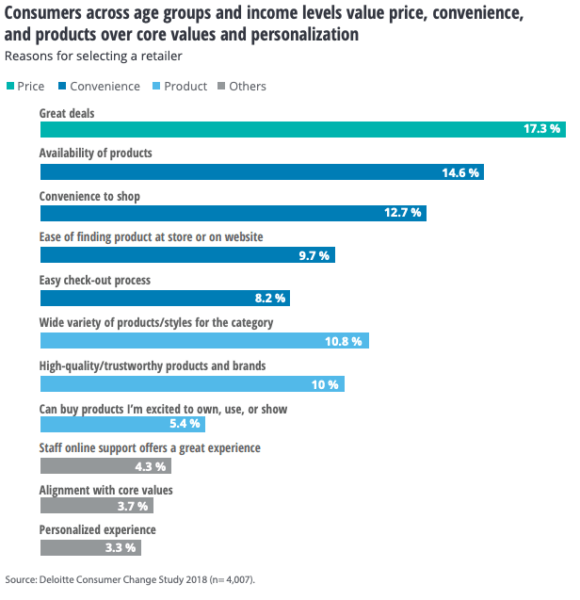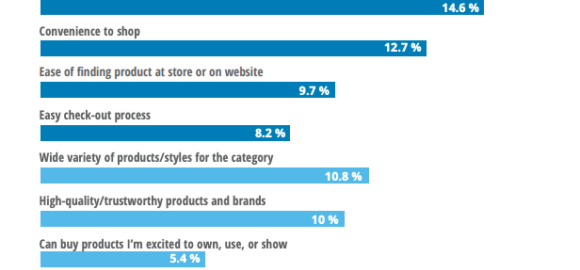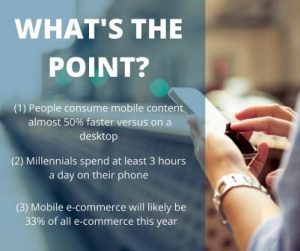Consumer behavior may not be what you think it is.
A widely accepted idea among retail technology providers is: consumers crave personalization. However, in a new study, Deloitte finds that personalization is last on a relatively long list of factors that consumers consider when choosing a retailer.
The report, entitled “The consumer is changing, but not how you think,” is based on a survey of over 4,000 U.S. adults. It explores nuanced demographic variables and shifts among consumers of various generational, ethnic and income categories.
More diverse shopping population. Deloitte explains, “The population has become increasingly heterogeneous: Millennials, now representing 30 percent of the population, are the most diverse generational cohort in US history, with roughly 44 percent consisting of ethnic and racial minorities. In comparison, only 25 percent of baby boomers belong to ethnic and racial minorities.”
These demographic changes are playing out in specific ways and in specific industries, which facile and widely repeated generalizations — such as e-commerce and mobile commerce are killing traditional retail — fail to adequately capture.

Price, product availability, convenience trump personalization. Deloitte says, “Consumers still look to value, product, and convenience as the overwhelmingly important attributes while making decisions.” This is consistent with historical findings. The firm adds, “often-noted attributes of the modern consumer like core values and personalized experiences ranked lowest among their priorities.” The company does say that these considerations have grown in importance over time but they’re not critical or fundamental to purchase decision-making.
It’s unclear how consumers understood the idea of “personalized experience” on a multiple choice survey. But it’s fair to infer that they had some idea of what that phrase meant. It may be the case that if you demonstrated or framed personalization more concretely you’d get a different response. Nonetheless, this finding seems to fly in the face of numerous other surveys and articles in technology and retail publications over the past few years.
Store visits up. Finally, the study discovered that offline store visits were up overall. “In 2018, consumers traveled to more stores, more often.” Although, when explored in more detail, visits vary by category. “Trips to hospitality, travel, and entertainment destinations rose by 8 percent in 2018. Trips to convenience, quick service restaurants and fuel stations jumped 16 percent. Even brick-and-mortar retail saw a 2 percent increase in traffic. The biggest gains were seen in grocery-related trips, which grew 7.7 percent in 2018, with a notable decrease in visits to traditional retail locations such as apparel stores (1.7 percent) and department stores (10.3 percent).”
Why you should care. These findings affirm the need to concretely understand your target audience and their attitudes and behaviors. With greater diversity than ever — as well as a significant urban-rural divide — it’s critical to not rely on assumptions but on data and experience. There’s a kind of herd mentality that one sees in technology, when it comes to “shiny new objects” or trends (e.g., voice search). But it’s important to question that conventional wisdom and not simply go along with “what the experts are saying.”
Marketing Land – Internet Marketing News, Strategies & Tips
(58)





